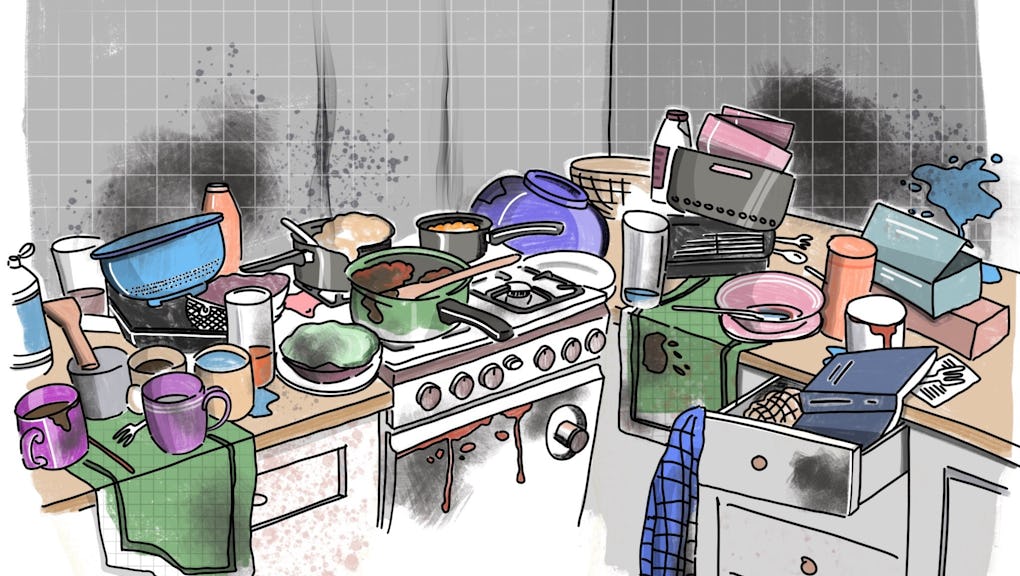Transgenic plants and animal
Transgenic plants and animals are living creatures experimented on using a type of biotechnology. To create transgenic plants/animals the cells of these organisms are being altered and are changed to be more beneficial to humans in a variety of different ways. The way these cells are changed is by taking DNA from a cell and altering it, or replacing it with DNA from a different species. The main goal of creating transgenic plants and animals is to be able to make them more sustainable, and to better understand genes. The three main topics we will discuss about transgenic plants/animals are: their greatest historical advancements, the different ways this biotechnology is being used, and the future of transgenic plants/animals.
The first transgenic organism was created by two men named Herbert Boyer and Stanley Cohen. Before their discovery Boyer and Cohen were in Hawaii and were both presenting papers. At this time, they had not met one another. Both Herbert and Stanley’s paper were about bacterial plasmids. (Bacterial plasmids are circular DNA molecules that can reproduce and replicate. They carry genes, like chromosomes, yet they are separate from them. Organisms can generally survive without them, although it would be much harder because they are beneficial to the organism.) They were both interested in the way plasmids cloned and Boyer had discovered an enzyme that was able to cut strands of DNA. The cut pieces could then be moved and attach to different strands of DNA. The two decided to meet and were able to further discuss their findings. Through that came a collaboration. Their goal was to use their research and discoveries concerning plasmids to further understand them by creating an experiment, which turned out to be a great success. They were able to get a gene from one organism and put it into a different one. This was the first successful experiment concerning genetically modified plants and animals and was by far the greatest advancement of this biotechnology. They were also given a prize of 500 000 dollars for their findings. After the
success of Herbert Boyer and Stanley Cohen, Rudolf Jaenisch and Beatrice Mintz where able to do something similar. The two scientists transferred DNA into the embryos of mice. There were many debates about the morality of transgenic plants and animals after these four scientists created their experiments. There was also a risk of contamination to non-genetically modified plants/animals and the fear of how it could affect our ecosystem. The government was able to take a stand and created guidelines for this biotechnology. They did not completely eliminate the possibility to have transgenic plants and animals, but minor guidelines were necessary. Many different experiments with this biotechnology have been created and are verry common. Transgenic tomatoes and glowing rats are some of the most common types of transgenic plants and animals. Rats have also been used to test medication. None of this would have been possible without Boyer and Cohen’s discovery.
Creating transgenic plants and animals is mostly used to help organisms thrive and be able to survive In harsher climates, for research purposes or prevent diseases. Some examples of this are when people have created new types of rice that are bigger and can grow in mud flats to make it easier to harvest. A second example is cherry trees that can self-pollinate and produce fruit without having to have other cherry trees to pollinate with. People also make transgenic organisms to extend their uses. One example of this extension is mixing the genetics of a spider and a goat to produce large amounts of spider silk. This is beneficial because spider silk is stronger than steel and they use it for bullet proof armor. We can also genetically modify humans to be immune to diseases and even to not be able to contract cancer. Considering all of the uses of genetically modifying plants or animals, I think the benefits outweigh the concerns.
The future for transgenic plants and animals looks quite interesting. There are many different pros and cons of using this biotechnology. As stated previously transgenic organisms are becoming more and more common. You can apply this technology to so many different things and that is why it is useful. Lots of produce have been genetically modified using this biotechnology. It can help them last longer and thrive, even if the produce is growing in a harsh climate with different weather patterns. Transgenic animals are equally as useful, and they are mostly used in experiments, or they are genetically modified to be more beneficial. Some are resistant to diseases and others can grow faster. Although there are several good aspects of transgenic plants and animals there are also many disadvantages. Several labs have done experiments concerning transgenic plants and animals and it costs a
lot to get equipment in order to study the results. It also takes lots of time for scientists to create transgenic plants and animals. These are big disadvantages because not everyone will be able to study the effects transgenic plants and animals because of those two aspects (but as this biotechnology is becoming increasingly popular this should not stay a problem). Transgenic seeds also cost more to purchase. In addition, there are many morality issues concerning transgenic animals because these animals are being tested on. With all of this taken in account for, transgenic plants and animals will still play a large role in our future like many other biotechnologies. Scientists have created transgenic salmon, which reproduce faster than normal salmon. Several disease-resistant animals have also been created including birds, chickens and rats. Hundreds of millions of hectares of land have already been planted with genetically modified crops. They are currently resistant to insects and herbicides and will hopefully be resistant to weeds and most diseases in the future. The future for transgenic plants and animals is looking bright.
In conclusion, transgenic plants and animals are quite interesting as you learn more about them. In learning about its history, we are able to find some of the most creative scientists. The possibilities for transgenic plants and animals are countless, seeing as there are many different uses for this biotechnology. Nevertheless the concern for this biotechnology is still great. It is testing many morals, yet the future of transgenic plants and animals is looking bright.
SOURCES:
National Geographic Society. “Genetically Modified Organisms.” National Geographic Society, 8 July 2019, https://www.nationalgeographic.org/encyclopedia/genetically-modified-organisms/.
RRB NTPC CEN 03/2015 merit list says: et al. “From Corgis to Corn: A Brief Look at the Long History of GMO Technology.” Science in the News, 23 Oct. 2016, https://sitn.hms.harvard.edu/flash/2015/from-corgis-to-corn-a-brief-look-at-the-long-history-of-gmo-technology/#:~:text=An%20enormous%20breakthrough%20in%20GMO,and%20paste%20it%20into%20another.
Barsness, John, et al. “Killing machines.” Field & Stream [West ed.], vol. 103, no. 7, Nov. 1998, pp. 57+. Gale In Context: Canada, link.gale.com/apps/doc/A21277649/GPS?u=43riss&sid=bookmark-GPS&xid=53284a73. Accessed 1 Apr. 2022.
Admin. “Biotechnology – Types and Applications of Biotechnology.” BYJUS, BYJU’S, 6 Apr. 2021, https://byjus.com/biology/what-is-biotechnology/.
“Building to order: genetic engineering.” The Economist, vol. 342, no. 8006, 1 Mar. 1997, p. 81. Gale In Context: Global Issues, link.gale.com/apps/doc/A19168521/GPS?u=43riss&sid=bookmark-GPS&xid=7cf92ace. Accessed 4 Apr. 2022.
Aldridge, Susan. “Transgenic Animals.” Biotechnology: In Context, edited by Brenda Wilmoth Lerner and K. Lee Lerner, Gale, 2012. In Context Series. Gale In Context: Science, link.gale.com/apps/doc/ZRHIFR780044056/GPS?u=43riss&sid=bookmark-GPS&xid=abb6bdc0. Accessed 4 Apr. 2022.
“Canada: Food fight.” The Economist, vol. 353, no. 8151, 25 Dec. 1999, p. 22. Gale In Context: Global Issues, link.gale.com/apps/doc/A58408772/GPS?u=43riss&sid=bookmark-GPS&xid=5352a724. Accessed 4 Apr. 2022.
“Transgenic Animals Have Genes from Other Species Inserted into Their Genomes.” WhatisBiotechnology.org, https://whatisbiotechnology.org/index.php/science/summary/transgenic/transgenic-animals-have-genes-from-other-species-inserted.
Bree, Author. “The Japanese Cherry Tree.” Minneopa Orchards, 1 July 2021, https://minnetonkaorchards.com/japanese-cherry-tree/.
“Herbert Boyer and Stanley Cohen.” Lemelson, https://lemelson.mit.edu/award-winners/herbert-boyer-and-stanley-cohen.
“Take Online Courses. Earn College Credit. Research Schools, Degrees & Careers.” Study.com | Take Online Courses. Earn College Credit. Research Schools, Degrees & Careers, https://study.com/academy/lesson/bacterial-plasmids-definition-function-uses.html.
“Bacterial DNA – the Role of Plasmids.” Science Learning Hub, https://www.sciencelearn.org.nz/resources/1900-bacterial-dna-the-role-of-plasmids#:~:text=Plasmids%20make%20themselves%20indispensable&text=Under%20stressful%20conditions%2C%20bacteria%20with,likely%20to%20survive%20and%20reproduce.
Nesbit, Rebecca. “The Future of GMO Food.” Scientific American Blog Network, Scientific American, 5 Sept. 2017, https://blogs.scientificamerican.com/observations/the-future-of-gmo-food/.
1,000+ Best Salmon Alive Photos · 100% Free Download · Pexels Stock Photos. https://www.pexels.com/search/salmon%20alive/.









